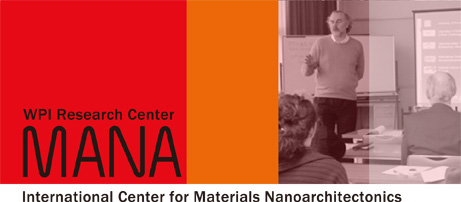Ryutaro Souda

- Affiliation:
- Inorganic Nanostructures Unit, Inorganic Nanostructured Materials Group
- Specialty:
- Ion beam analysis, Surface science
- Academic degree:
- Ph.D, University of Tokyo (1986)
- Recent publications
- See NIMS Researchers DB
Educational & Working History
| 2005 | - | 2007 | Visiting Professor, Department of Materials Science and Technology, Tokyo University of Science |
| 2001 | - | Present | Senior Researcher, National Institute for Materials Science |
| 2001 | - | 2005 | Visiting Associate Professor, Department of Materials Science and Technology, Tokyo University of Science |
| 2001 | - | 2004 | Visiting Associate Professor, Institute of Materials Science, University of Tsukuba |
| 1992 | - | 2001 | Senior Resercher, National Institute for Research in Inorganic Materials |
| 1986 | Ph.D. University of Tokyo | ||
| 1982 | - | 1990 | Resercher, National Institute for Research in Inorganic Materials |
Research Interests
Mechanism of ion-surface charge exchange:
Ions are emitted from solid surfaces by excitation of energetic ions and electrons. The structure and composition of solid surfaces can be analyzed by detection of such ions. However, the mechanism of ion emission from solid surfaces is still poorly understood. We have been investigating experimentally how the ions are created on the surface during atomic collisions and dissipation of initial electronic excitation in collaboration with a theoretitian in Nagoya University. We have revealed that the charge state of scattered protons are intimately related to the local bonding of a tagert atom with its surroundings (the band effect). The band effect also manifests itself in electron stimulated positive-ion desorption, as evidenced typically by the occurrence of Colomb explosion of nanoclusters adsorbed on molecular-solid films at cryogenic temperatures. Currently, we are investigating the matrix effect on secondary ion emission from molecular-solid films.
Glass transition and phase transition of soft matters:
The origin of the glass transition remains a major challenge of modern physics. Experimentally, difficulties are often encountered in assignments of calorimetric glass-transition temperatures (Tg) of poorly glass-forming materials. We have been investigating the glass transition of vapor-deposited thin films at the molecular level by using time-of flight secondary ion mass spectrometry (TOF-SIMS). Analyses of the self-diffusion of individual molecules and cooperative motion of many molecules (fluidity) revealed that diffusive glass is created prior to the evolution of supercooled liquid at Tg, suggesting that spatial heterogeneity of fragile liquid in deeply supercooled region can be explained as the interplay between diffusive-glass and supercooled-liquid domains. TOF-SIMS also revealed very liquid-like nature of crystalline thin films. This behavior can be explained as coexistence of a metastable liquid or premelting of stable crystals, characteristic of the nanometer sized particles.
Selected Papers
- Roles of 2D liquid in reduction of the glass-transition temperature of thin molecular solid films
- R. Souda
- J. Phys. Chem. C, 2011, 115, 8136.
- Structural relaxation of vapor-deposited water, methanol, ethanol, and 1-propanol films studied using low-energy ion scattering
- R. Souda
- J. Phys. Chem. B, 2010, 114, 11127.
- Roles of individual and cooperative motions of molecules in glass-liquid transition and crystallization of toluene
- R. Souda
- J. Phys. Chem. B, 2010, 114, 10734.
- Liquidlike nature of crystalline n-butane and n-pentane films studied by time-of-flight secondary ion mass spectrometry
- R. Souda
- J. Phys. Chem. B, 2009, 113, 15831.
- Phase transition of 1-ethyl-3-methylimidazolium bis(trifluoromethylsulfonyl)imide thin films on highly oriented pyrolytic graphite
- R. Souda
- J. Phys. Chem. B, 2009, 113, 12973.


